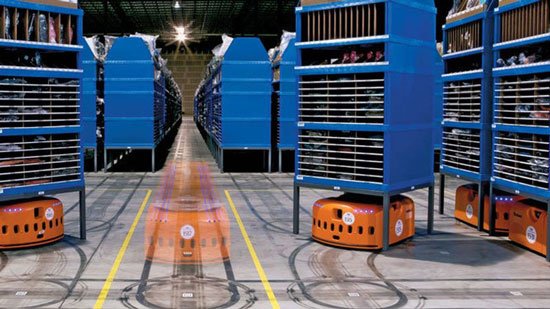
How many clicks does it take to place an order on Amazon? Very few! With zero effort, online, a product from anywhere on the planet arrives right at the buyer’s door. So why does Amazon need 270,000 employees, especially when only a tiny percentage of them work in accounting, administration, and e-commerce? They work in the warehouses, is the answer, because even the most sophisticated digital process still demands—albeit hidden—vast labor expenditure: endless grunt work, invisible to the happy consumers. But not for much longer, say the company’s gurus; the robots are coming! In 2014, 15,000 robots operated in ten Amazon warehouses. In 2015 they rose to 30,000. Today there are 45,000, growing by 15,000 a year, thanks to the 2012 acquisition of the Chinese firm Kiva, which specializes in exactly this: automating the picking and packing process in large warehouses.
So here is yet more proof, say the cognoscenti, of how outdated and banal manual labour has become. Trail-blazing Amazon keeps increasing its profitability while simultaneously reducing its dependence on living labour! Seriously? More robots and greater automation mean a greater capacity to process orders. More orders mean a demand for more goods. More goods mean greater production in more factories, workshops, craft studios, labs and labour sweatshops in every corner of the planet. It means even more labour—not on Seattle-style American terms, but on Jakarta, Calcutta, Karachi terms. It means “liberation” from work for Amazon, but the re-introduction of slavery conditions for thousands of workers across the globe…
